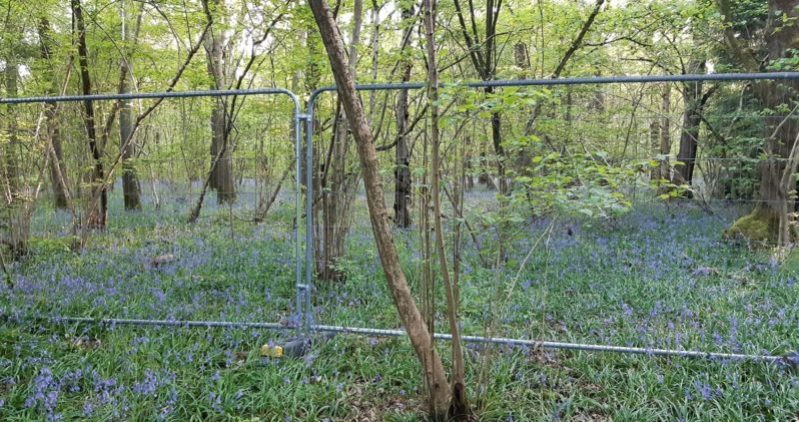
Submitted by Carmyn de Jonge on Fri, 23/10/2020 - 13:01
Moving ancient woodlands cut down to make way for HS2 is a fundamentally flawed idea, leading ecologists say.
The company behind the new rapid rail connection between London and the north of England is cutting down trees in the course of the construction. HS2 say the best strategy for the environment is to move the woodland soils to other places. Experts have told the BBC there is no strong evidence this method works and say it is a "smokescreen". HS2 acknowledges the evidence for the plan is "limited".
Penny McGregor's family own part of ancient South Cubbington Wood in Warwickshire, of which 1.5 hectares (3.7 acres) is currently being cut down. "This means everything to the community," said Mrs McGregor. "There are ashes scattered here of people's loved ones. It's always been a place where people go. It's de-stressing, it's good for you. I have tried to show [prime minister] Boris Johnson and [transport secretary] Grant Shapps, but no matter how important a place seems to be to locals, this high-speed line trumps everything. It's becoming less and less important as we go forward with what's happening with Covid. It's madness."
Elements of the ancient woodland are being translocated to a field next door. Translocation was originally described as moving a specific plant, animal, or insect for the purposes of conservation.
But it has since controversially been used to define moving entire ecosystems that are in the way of human development. First, the ancient woodland - the "donor site" - is analysed and mapped. Then the vast majority of the trees are cut down. The soils are dug up and moved in trucks straight to a nearby "receiver" site.
'From A to B'
Coppice stools, saplings and bulbs are replanted. Bat boxes, reptile banks and ponds may be installed. HS2 ecologist Sam Whittall said: "We are aiming to create the same habitat… the idea is to move that habitat from A to B."
The theory is the wood will live on, just in a different form and place. However, there is no robust evidence this will work, or established method of measuring success. Questioned about the strategy, HS2 said it "recognises" there is "currently a lack of long-term detailed research into the post-translocation success of habitat translocation and there is limited robust published evidence of the effectiveness of ancient woodland soils translocation".
'Tearing up a Turner Masterpiece'
David Coomes, professor of forest ecology and conservation at the University of Cambridge, said translocation in this sense "is like tearing up a Turner masterpiece and tossing little bits of it in to a new art installation and hoping people don't notice the difference." He said: "There are complicated networks and they take a long time to come together - hundreds of years - particularly the three-dimensional structure of the forest, the trees which have hollows for bats, the homes for lots of different fungi and lots of different insects."
Dr Mark Everard, from the University of the West of England, said translocation was "essentially a smokescreen for destruction and recreation. You can't create ancient, you can't instantly create ecosystems. It hasn't got the same microbiology or hydrology. It is treated as a panacea and it is most definitely not. At best it is gardening."
Merlin Sheldrake, biologist and author of Entangled Life, a book about the study of fungi, said: "Different communities of organisms, whether animal, fungus, bacteria, or protist, live at different depths, or around the roots of different species of tree.
"If you dig up, transport, and deposit the soil somewhere else you will inevitably disrupt and destroy most of the intricate food webs that you are trying to preserve."
